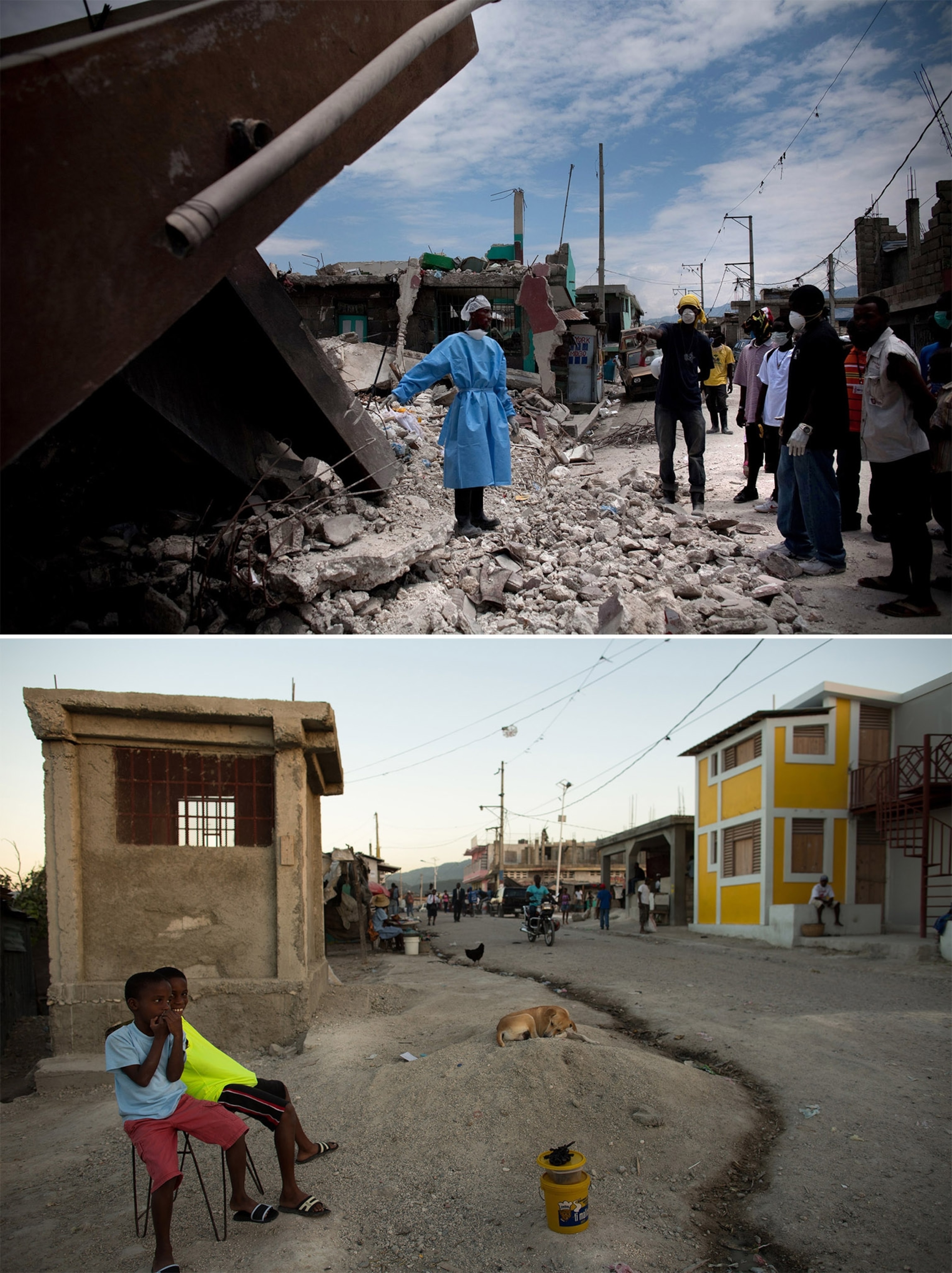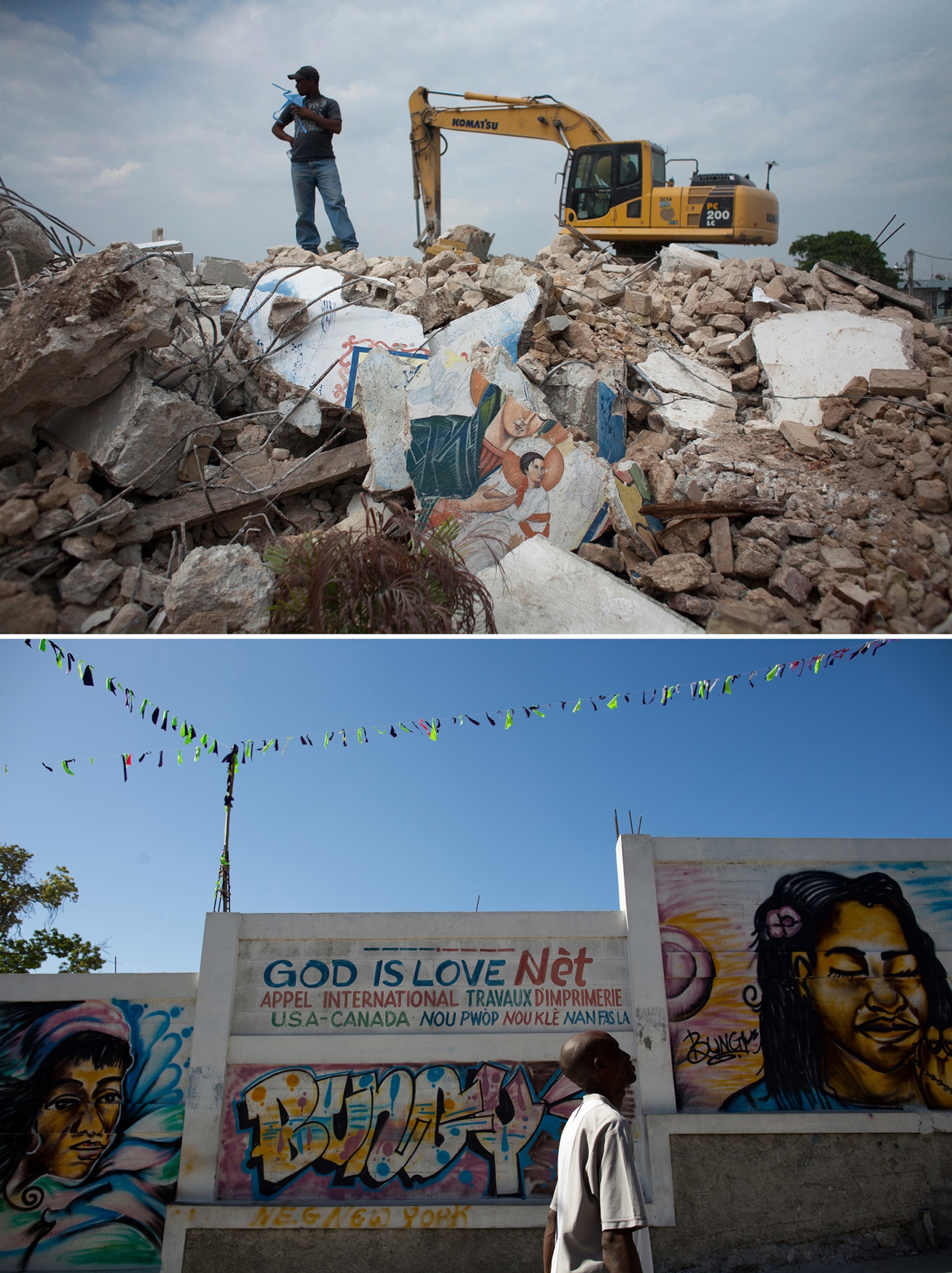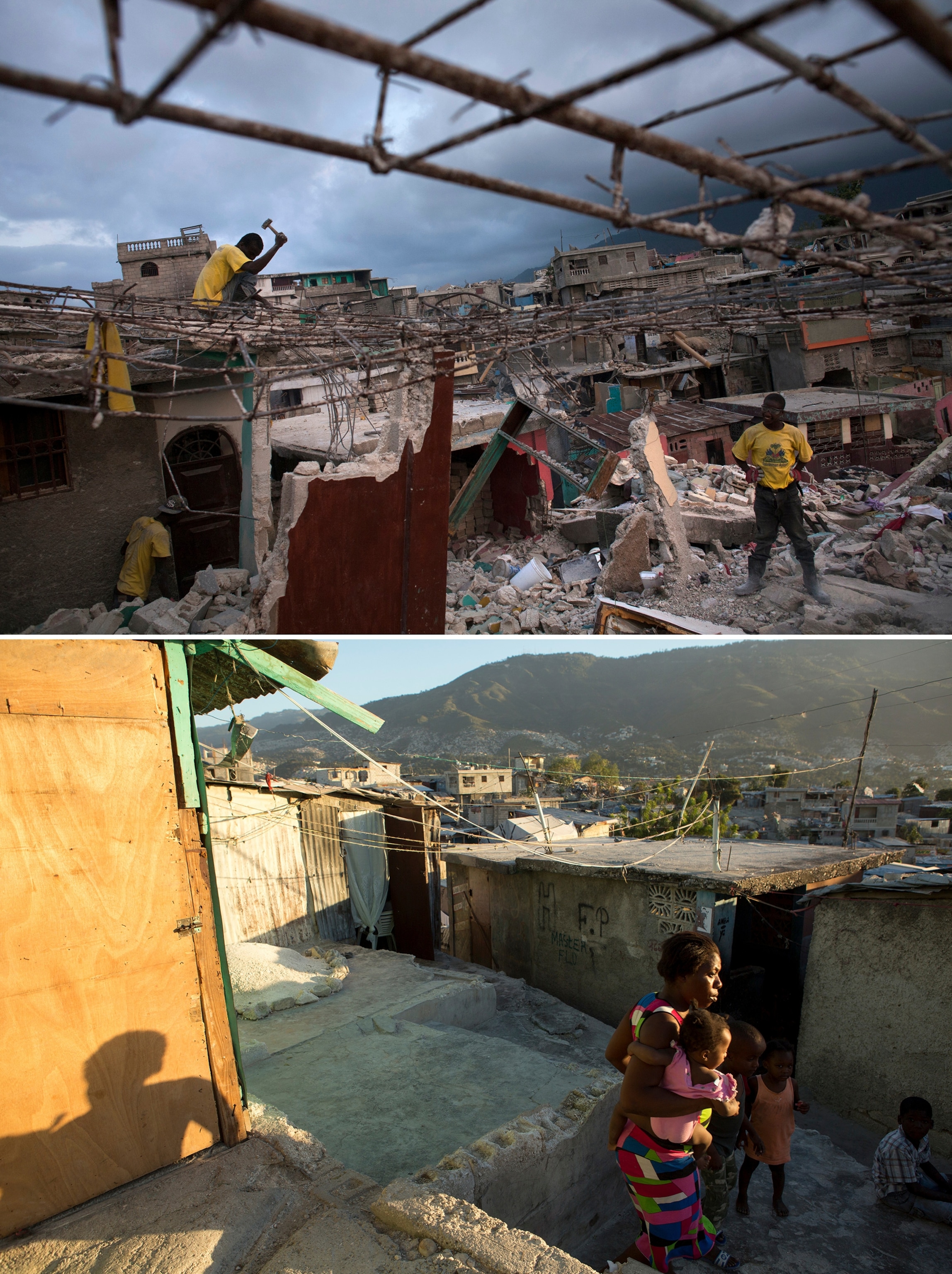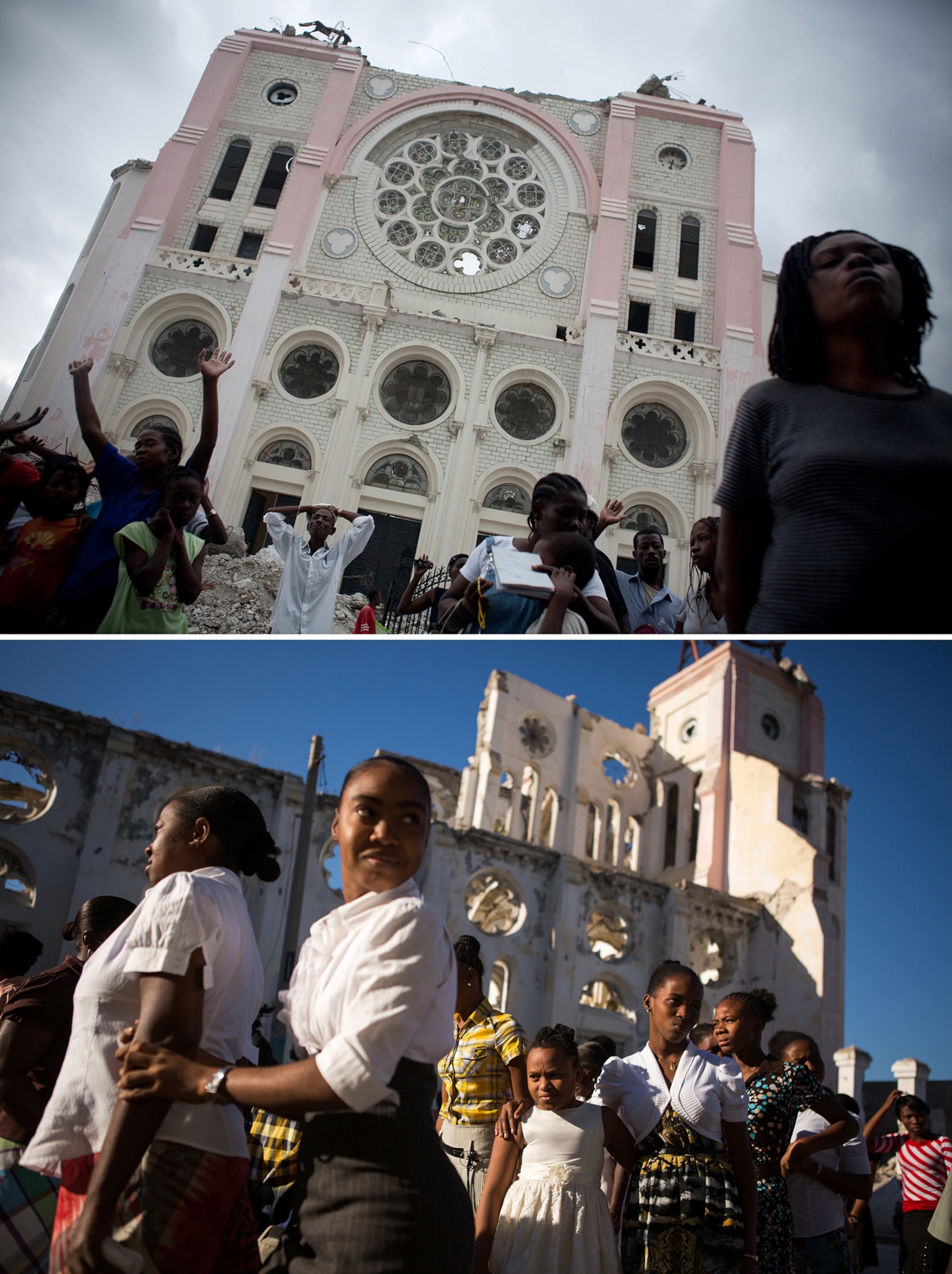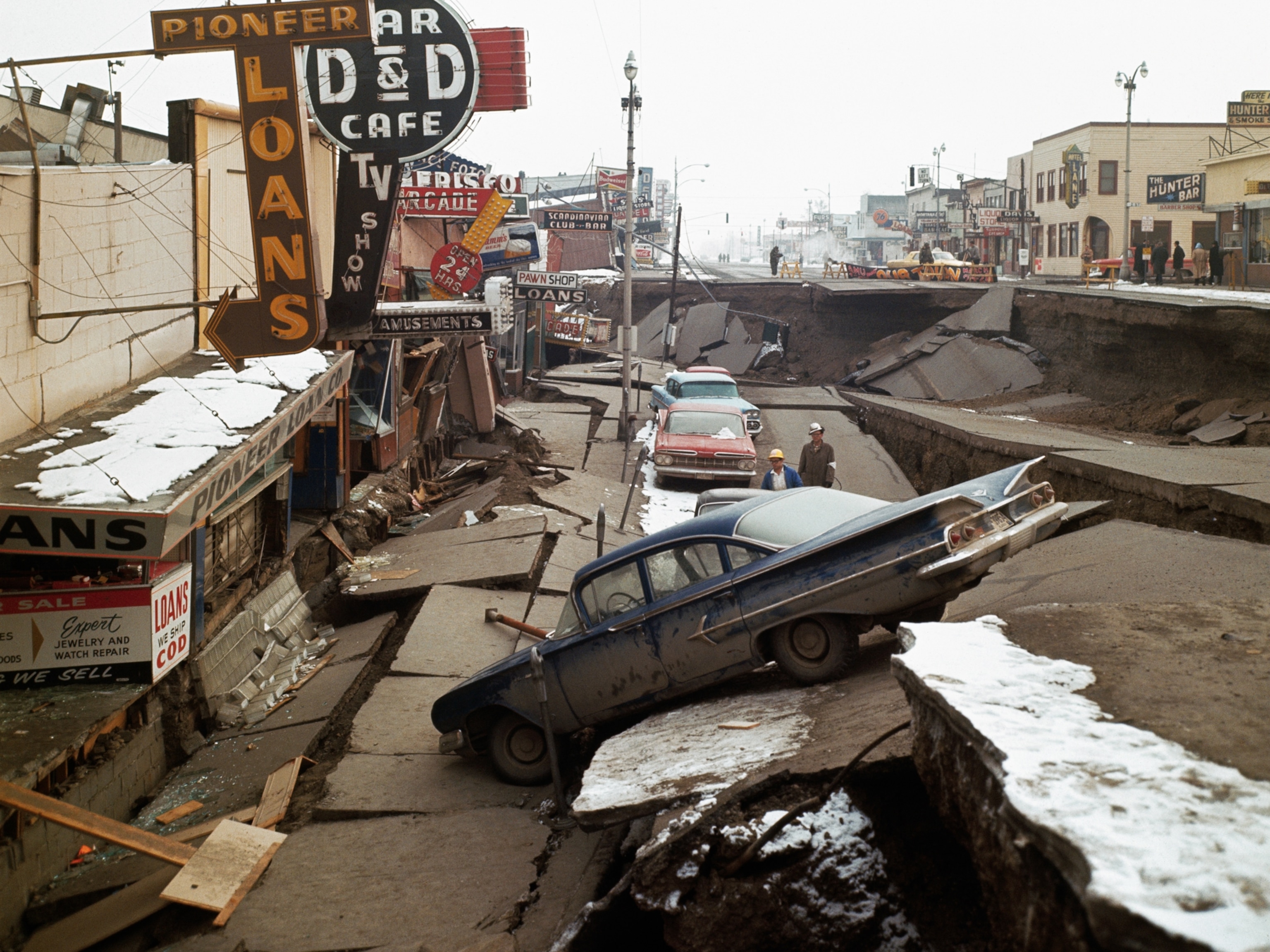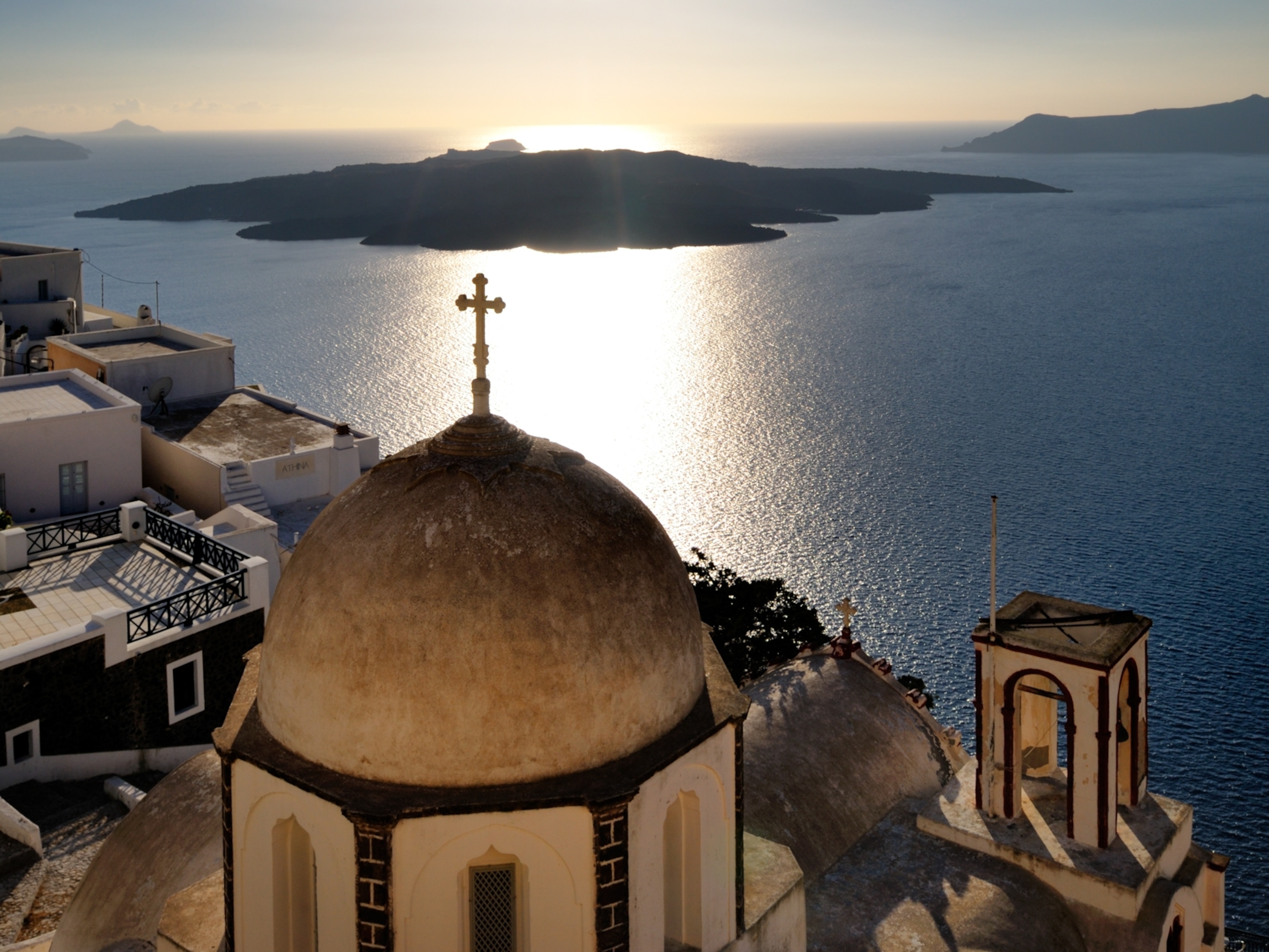Like September 11 in the United States, janvye (January) 12 in Haiti has become a term in its own right, a marker against which time is measured. "His son was born two months after janvye 12."
Monday marks five years since the goudou goudou—the Haitian creole term for the sound that fills the air when a big earthquake happens. The January 12 quake took more than 200,000 lives and left 1.5 million homeless.I came to Haiti a month later and stayed for more than a year, photographing the earthquake's aftermath for the New York Times, the Wall Street Journal, Reuters, Getty, and groups like the Red Cross.
I returned to Haiti recently, in the leadup to the fifth anniversary.
After the quake, the streets of Port-au-Prince, the nation's capital, were strewn with chunks of concrete, rebar, and whatever tropical storms had washed into the spaces in between. Everyone was living life outside: Even those whose homes had not fallen did not trust them to withstand the aftershocks. And every ritual was public: dressing, bathing, grieving. (Learn more about the Haitian earthquake.)
Several months after I arrived, people began to notice my camera and I realized that the Haitians' personal shock was wearing off. It made my job harder, having to explain that yes, there were many of us taking these same pictures of you and, yes, nothing good has come to you because of it—but maybe this time?
Today in Port-au-Prince, red construction fences surround many collapsed buildings. They have been nicknamed tol wouj, which literally means "red tin," but which also refers to someone who promises something that isn't delivered. Behind many of the fences is empty space where no one is working. (Watch our "Earthquakes 101" video.)
The day before the one-year anniversary of the goudou goudou, I wandered into the shell of Port-au-Prince's national cathedral, where only the walls were left standing (above). A woman was winding her way through the debris, holding a white plastic crucifix and wearing a dress the same color as the dusty yellow walls, doing the stations of the cross.
Now the cathedral entrances are bricked up, except one covered with a metal gate that you can peer through to the same view of debris. A new building next-door accommodates worshippers while the cathedral awaits its makeover. Big and welcoming, the new space nonetheless feels temporary.
This year's fifth anniversary is being commemorated in the setting of street protests. Haitians have been concerned that if a new election was not set by janvye 12, the parliament would dissolve and President Michel Martelly become the sole head of government. (A deal has now been struck.)
We don't give Haiti as much credit as it deserves for its ingenuity and savvy in fixing its problems. But much remains to do. Port-au-Prince's streets have been cleared for a while now, and traffic has improved somewhat. New government ministry buildings are under construction around the main city plaza, which is now tent-free and once again features soccer players and ice cream trucks.
But over 200,000 Haitians still live in tent camps away from the main boulevards, and many others are in homes that suffered major damage.
The following gallery features my pictures from this month juxtaposed with images I made in the same spots in the months after the 2010 quake.
In the photo above, a woman prays amid the wreckage of Notre Dame de l'Assomption—the main cathedral in Port-au-Prince—on January 9, 2011.
—By Allison Shelley, photo gallery by Nicole Werbeck

